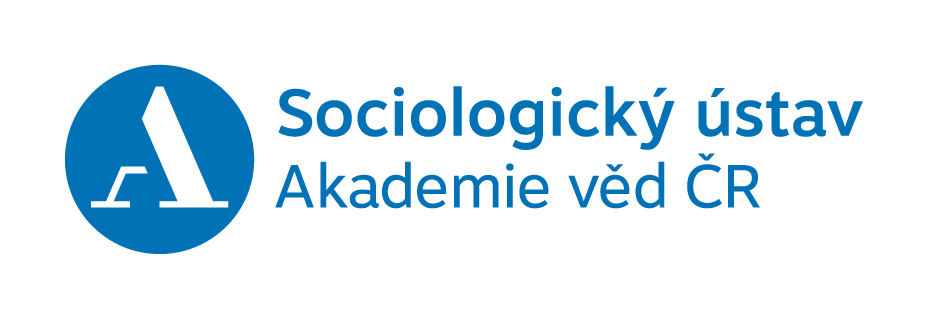An agreement initiated by the Association of Public Opinion and Market Research Agencies (Sdružením agentur pro výzkum trhu a veřejného mínění – SIMAR) led to the introduction of standardised terminology for pre-election research that defines individual types of outputs.
An agreement initiated by the Association of Public Opinion and Market Research Agencies (Sdružením agentur pro výzkum trhu a veřejného mínění – SIMAR) led to the introduction of standardised terminology for pre-election research that defines individual types of outputs. Based on the agreed terminology, the basic outputs of pre-election research are ‘party preferences’, ‘voter preferences’, and ‘likely voter model’. It is necessary to clearly distinguish between these different types of output because each one provides a different type of information and their results are not directly comparable.
All three types of output derive from questions about respondents’ participation in elections and their choice of party or candidate if they were to participate. The basic difference between these outputs is what part of the population is included in the calculation:
- Party preferences report the distribution of support for political parties across the population that is eligible to vote and therefore includes even those people who are definitely not planning to vote or don’t know who they will vote for.
- Voter preferences include only the views of those people who are likely to vote, while people who do not yet know how they will vote have their own category here.
- Likely voter model also work only with those respondents who are likely to vote, but those voters who at the given time are unable to choose a party or a candidate are divided up between parties and candidates.
The results of research into party and voter preferences include categories that do not exist in real-world elections (i.e. the ‘don’t know’ category and, in the case of party preferences the ‘won’t participate in the elections’ category), which means they cannot be directly compared with election results. The results of likely voter models are the only type of outcome that can actually be compared with election results. However, this is only appropriate if the data for this model are collected close in time to when the elections (within the frame of days), and ideally right before them. Models of voting behaviour are not the same thing as election forecasting, they are estimates that relate to the point in time when the data were collected.
The Public Opinion Research Centre regularly publishes the results of its research on party preferences and its likely voter model. In order to clearly distinguish between preferences and the results of likely voter model, the results are presented in different ways in the centre’s press releases. The results of likely voter model are displayed in a bar plot and party preferences are presented as a table, while in earlier press releases they were illustrated in a pie chart.
Likely voter models can be constructed in different ways, depending on who or what company is creating them. The method the Public Opinion Research Centre uses to construct its likely voter models can be found in other articles of this section.
As well as the outputs described here, there are also other forms of output that we can publicly come across. For example, party sympathies, election forecast, and potential election support. The Public Opinion Research Centre does not however use these outputs in its reports.
How does the Public Opinion Research Centre estimate voters’ party preferences?
Party preferences describe the political preferences of the total population of the Czech Republic eligible to vote. They are determined on the basis of two basic questions: a question about election participation and a question about voters’ preferred political party. In the period between elections, at a time when the date of the next elections is not yet known, all respondents in this kind of research are asked the following question about participating in the elections:
‘Imagine that elections to the Chamber of Deputies were to be held next week. Would you vote? Definitely yes, probably yes, probably no, definitely no, or you don’t know?’
All of the respondents who are or who will be eligible to vote and who have not ruled out participating in the elections, which means that they answered the previous question with any response other than ‘definitely no’, are then asked the following question:
‘If you did vote in the elections, which party would you vote for?’
This is what is called an ‘open-ended question’, which means that it is presented to the respondents without any response items, and the respondents must come up with the response on their own, which here means independently naming the party that they would vote for.
Party preferences are determined on the basis of the responses to these two questions. These estimates indicate the distribution of party preferences among voters regardless of how likely respondents are to turn out to vote, and together with people who do not know whom they would vote for or declare that they will definitely not vote in the elections.
How does the Public Opinion Research Centre create its likely voter model?
The likely voter model simulates the distribution of votes in a hypothetical election. It is not the same thing as a forecast of future election results, it only provides information about the distribution of voter support at the time of data collection. The model is constructed from the results of questions about voter participation, choice of party, and respondents’ certainty about their choice, and takes into account respondents’ indecision between more than one party.
In the period between elections, at a time when the date of the next elections is not yet known, all respondents in this kind of research are asked the following question about participating in the elections:
‘Imagine that elections to the Chamber of Deputies were to be held next week. Would you vote? Definitely yes, probably yes, probably no, definitely no, or you don’t know?’
Every respondent entered into the model is assigned a coefficient based on their response indicating the probability that the respondent will participate in the elections. Those who chose the response ‘definitely yes’ are assigned a probability of 100%, those who said ‘probably yes’ have a 75% probability, while ‘probably no’ and ‘don’t know’ have a 25% probability. Respondents who chose the response ‘definitely no’ are assigned a zero probability of participation.
All of the respondents who are or who will be eligible to vote and who have not ruled out participating in the elections, which means that they answered the previous question with any response other than ‘definitely no’, are then asked the following question:
‘If you did vote in the elections, which party would you vote for?’
If respondents name a specific party, they are asked another question about the certainty of their choice:
‘How sure are you that you would choose this party? Absolutely sure, almost sure, not very sure, not sure at all.’
If the respondents are not absolutely certain about their choice or do not name a specific party, they are asked an open-ended question where they can name a maximum of two other parties:
‘Given that you are not absolutely sure of your choice, what (other) parties would you consider?’
Respondents who are ‘absolutely sure’ of their choice are assigned a probability of 100% that they will vote for this political party. If respondents are ‘almost sure’ of their choice, the probability that they will vote for the first party named is given as 80%, and the remaining 20% is divided between the other two parties named. In the case of the response ‘not very sure’, the probability assigned to the first party the respondent named is 50%, and in the case of ‘not sure at all’ the probability is 33%. In general, if respondents express any uncertainty about the choice of party that they named first, their vote is divided up among all the other parties named in a described ratio. If the respondent did not indicate any party in response to the first question, then all the parties mentioned are assigned a 33% probability. The given probability of participating in elections is then combined with the probability of voting for a given party by multiplying the two probabilities. This produces the weight of the respondent’s vote, which expresses the probability that the responsibility will turn out to vote and will also vote for the given party.
Here are several examples of how the likely voter model works in practice:
The first example is that of a firmly decided voter. This type of respondent answers that s/he will ‘definitely’ vote in the elections (100% probability) and is ‘absolutely sure’ that s/he will vote for Political Party A (again 100% probability). In this case Party A gets 100% (1 * 1). Party A thus has the total vote of this respondent.
The next example is that of a respondent who will ‘probably’ vote in the elections (and is thus assigned a probability of 75%) and is ‘almost sure’ that s/he will vote for Party A (80% probability). As well as Party A, s/he is also considering Party B and Party C. In this case Party A gets 60% of this vote (0.75 * 0.8) and the other two parties each get 7.5% ((0.75 * 0.2) / 2).
Another respondents might respond that s/he ‘doesn’t know’ whether s/he’ll vote in the elections (25% probability) and when asked about the choice of party answers that s/he would like to vote for ‘some new’ party. Because no specific party is named here, the respondent is asked what political parties s/he would consider voting for. The response is that s/he would consider Party B and Party C, and only two parties can be named in this response. Both parties are thus assigned a probability of the respondent voting for them of 8.25% (0.25 * 0.33).
In the end we have all vote votes from all the respondents calculated for each party. As we can see, each voter’s vote can in this model be divided up among more than one party, but the total weight of the vote is never greater than one vote. All the votes with their weights are added up for each individual party and the percentage distribution represents the party results in the likely voter model.



